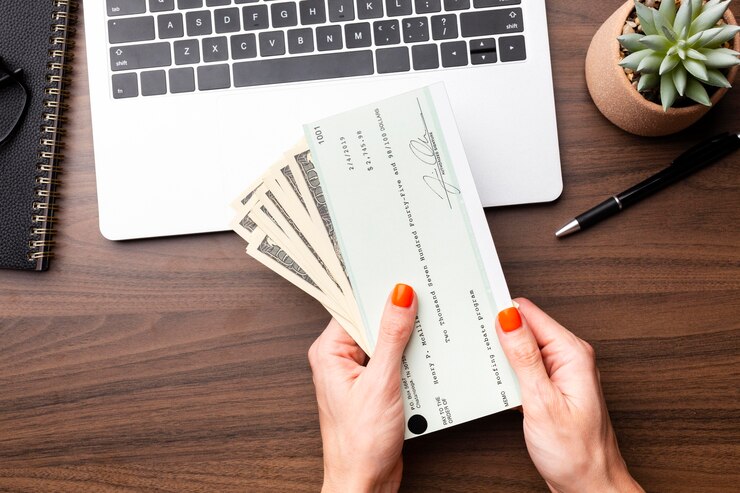In today’s digital age, the convenience and efficiency of managing financial transactions have significantly evolved. Among these advancements is the ability to print your own checks, a practice that can save time, money, and provide greater control over your financial processes. Whether you’re a small business owner, a freelancer, or an individual looking to streamline your banking activities, printing your own checks can be an invaluable tool. This article will explore the benefits, requirements, and step-by-step process of printing your own checks.
Benefits of Printing Your Own Checks
Cost Savings: One of the most compelling reasons to print your own checks is the cost savings. Traditional check ordering from banks can be expensive, especially if you require a large volume. By printing checks in-house, you can significantly reduce these expenses.
Convenience: Printing checks on demand means you don’t have to wait for checks to be delivered. This is particularly beneficial for businesses that need to issue payments quickly or manage payroll.
Customization: When you print your own checks, you have the flexibility to customize the design, including adding your logo, choosing the layout, and incorporating security features. This can enhance your brand’s professionalism and make your checks stand out.
Security: Printing checks in-house allows you to implement advanced security features, such as watermarks, microprinting, and security inks, reducing the risk of fraud. You also maintain control over the entire check production process, ensuring that sensitive financial information is kept confidential.
Requirements for Printing Your Own Checks
Before you start printing your own checks, it’s essential to ensure you have the necessary tools and adhere to legal and banking standards. Here are the key requirements:
Check Printing Software: Invest in reliable check printing software that meets your needs. This software will provide templates and features to design and print checks that comply with banking standards.
Check Stock Paper: Use high-quality check stock paper designed for printing checks. This paper often includes security features like watermarks and microprinting, which are crucial for preventing fraud.
MICR Printer or Toner: Magnetic Ink Character Recognition (MICR) technology is required for printing the special characters at the bottom of checks. You’ll need either a MICR printer or MICR toner for a laser printer to produce these characters accurately.
Bank Information and Design Template: Ensure you have all the necessary banking information, including your bank account number, routing number, and check number sequence. Your check design template should include these details in the correct format.
Security Features: Incorporate security features into your check design, such as microprinting, watermarks, and security inks. These features help prevent counterfeiting and alteration.
Step-by-Step Guide to Printing Your Own Checks
Step 1: Choose the Right Software
Selecting the right check printing software is crucial. Popular options include QuickBooks, CheckBuilderPro, and VersaCheck. These programs offer user-friendly interfaces, templates, and customization options. Ensure the software you choose is compatible with your printer and meets your specific needs.
Step 2: Set Up Your Printer
If you don’t already have a MICR printer, you’ll need to either purchase one or obtain MICR toner for your existing laser printer. MICR printers are designed to print the magnetic characters at the bottom of checks, which are essential for processing by banks.
Step 3: Design Your Check
Using your check printing software, design your check template. Include all necessary information such as your name or business name, address, bank account number, routing number, and check number. Customize the check with your logo and any other branding elements. Ensure the layout complies with banking standards.
Step 4: Load Check Stock Paper
Load the check stock paper into your printer. Make sure the paper is loaded correctly to avoid any printing errors. Check stock paper is usually perforated to ensure easy separation of individual checks.
Step 5: Print a Test Check
Before printing a batch of checks, print a test check to verify that all information is correctly aligned and legible. Ensure that the MICR characters at the bottom of the check are printed accurately and can be read by bank processing machines.
Step 6: Print Your Checks
Once you are satisfied with the test check, proceed to print your checks. Most check printing software allows you to print multiple checks at once, which can save time. Ensure that each check is printed correctly and that there are no smudges or misalignments.
Step 7: Record and Monitor
Keep a record of all printed checks, including check numbers, dates, and amounts. This will help you monitor your check usage and ensure accurate accounting. Regularly reconcile your checkbook with your bank statements to avoid discrepancies.
Tips for Secure Check Printing
Use Secure Check Stock: Always use high-quality check stock paper with built-in security features to reduce the risk of fraud.
Regularly Update Software: Keep your check printing software up to date to benefit from the latest features and security enhancements.
Monitor for Fraud: Regularly review your bank statements for any unauthorized transactions. Report any suspicious activity to your bank immediately.
Limit Access: Restrict access to check printing software and supplies to authorized personnel only. This reduces the risk of internal fraud.
Void Unused Checks: If you print a check by mistake or no longer need it, void the check and securely dispose of it to prevent misuse.
Conclusion
Printing your own checks can be a highly efficient and cost-effective solution for managing your financial transactions. By investing in the right software, printer, and check stock paper, you can enjoy the benefits of convenience, customization, and enhanced security. Follow the step-by-step guide and best practices outlined in this article to ensure a smooth and secure check printing process. Whether you’re a small business owner, a freelancer, or an individual, printing your own checks can provide greater control over your finances and streamline your banking activities.

